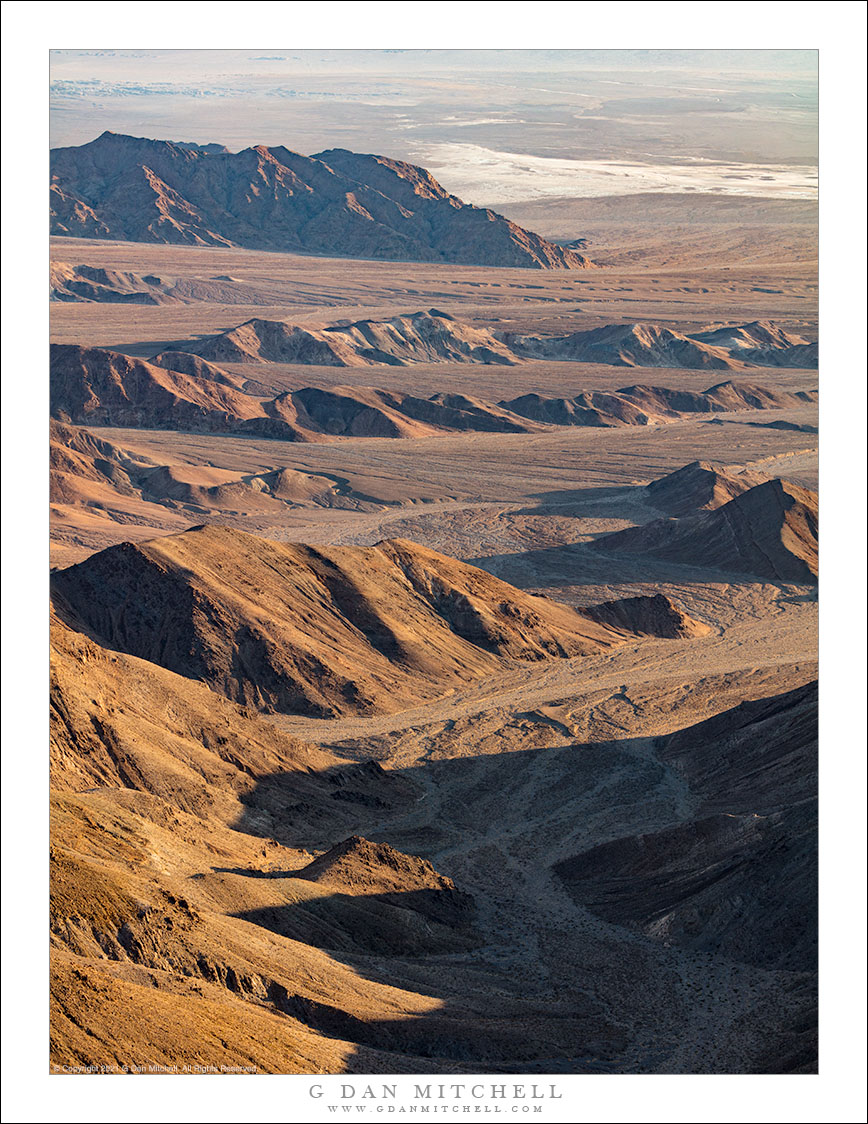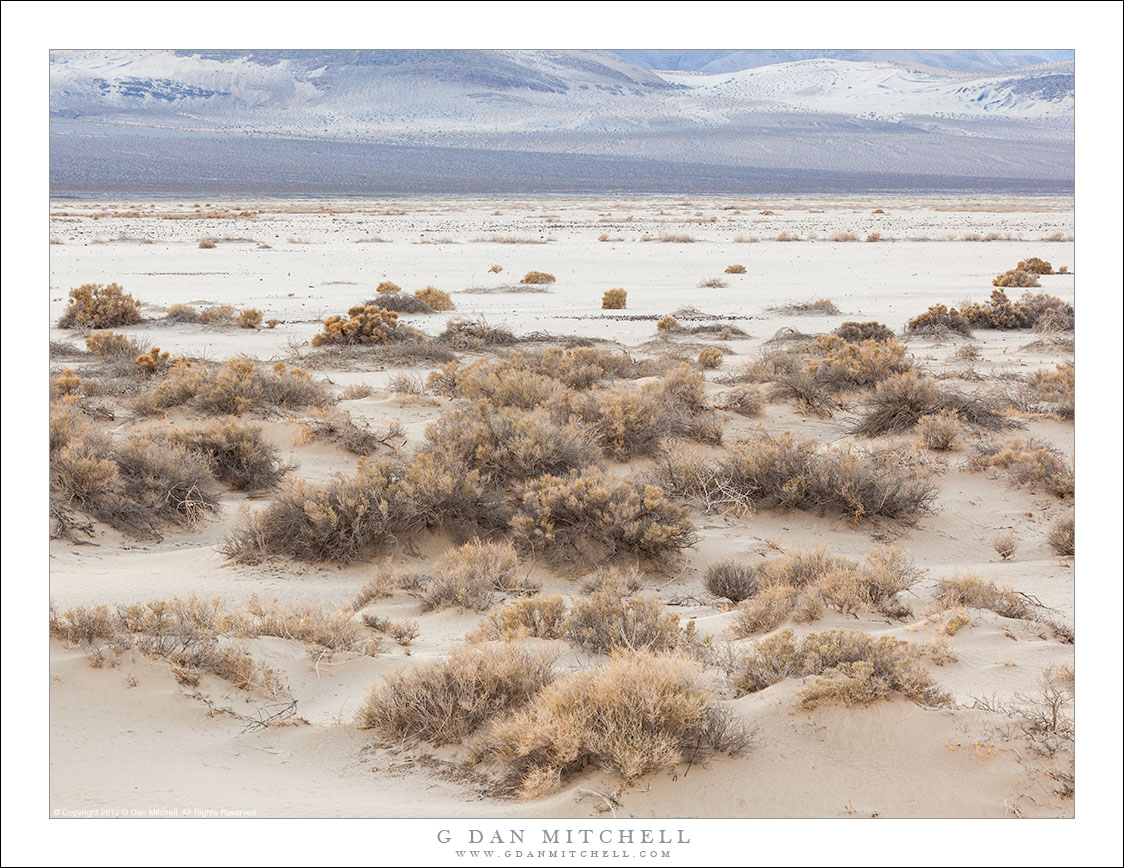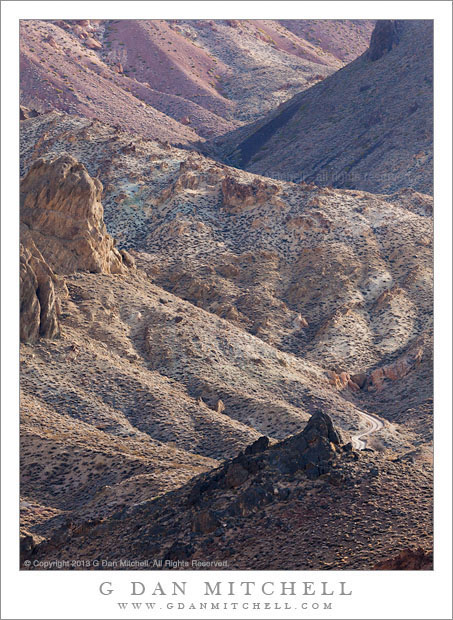
Lower Panamint Mountains. © Copyright 2021 G Dan Mitchell – all rights reserved.
The lower reaches of the Panamint Mountain Range at the edge of Death Valley.
This photograph is my excuse to return to an old theme of my posts about Death Valley National Park. For a place with a reputation so connected to aridity and heat, the clear evidence of the role of water in the formation of this landscape is abundant. In fact, it is hard to locate any place in the park where water had not played an important role. (The repetitive pattern of dips and rises on any drive across “level” roads here is a fine reminder of the importance of flowing water.)
I made this photograph from a vantage point high in the Panamint Mountain Range, from which I could look down at the vast alluvial fans formed by material that was once above the present-day upper reaches of the range. These fans go on for miles, and the amount of material they contain is nearly incomprehensible. More durable material still sticks up above the surface of the material, and washes and gully cut across their surface nearly everywhere.
G Dan Mitchell is a California photographer and visual opportunist. His book, “California’s Fall Color: A Photographer’s Guide to Autumn in the Sierra” is available from Heyday Books, Amazon, and directly from G Dan Mitchell.
Blog | About | Flickr | Facebook | Email
Links to Articles, Sales and Licensing, my Sierra Nevada Fall Color book, Contact Information.
Scroll down to leave a comment or question.
All media © Copyright G Dan Mitchell and others as indicated. Any use requires advance permission from G Dan Mitchell.




